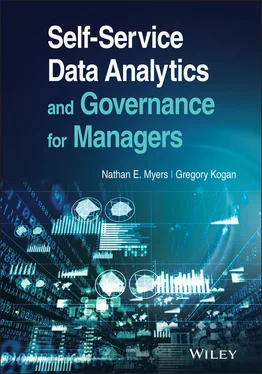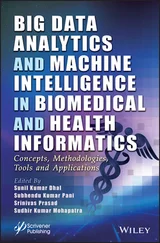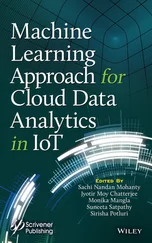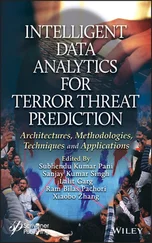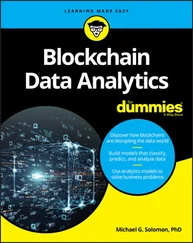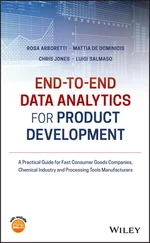1 ...7 8 9 11 12 13 ...17
Need for Self-Service Data Analytics Governance
Having set the stage, it is now appropriate to introduce one of the key topics of this book, which is the need for strong self-service data analytics governance. Many readers may already have begun to replace their spreadsheet-based end-user computing (EUC) tooling with tactical data analytics tools. We have already discussed the significant benefits available in putting flexible, user-configurable tools into the hands of users. Once the seal has been broken, expect widespread deployment at scale.
Skip ahead two years and suddenly you feel exposed. Which builds are being relied upon by regulators? Which builds are relied upon by customers? Did the individual who put them in place have adequate knowledge of the underlying processes to build reliably and effectively? Were they well versed with the data analytics tools and technologies deployed? Were such builds adequately tested? Precisely how many builds exist across the organization? If key software vendors raise the price of basic licenses, is any of the work salvageable for migration to a new platform? You are being challenged by key internal clients on the quality of the financial deliverables that your team prepares, but you learn your team has simply been taking analytics build outputs at face value. They no longer understand the longhand processing steps that have been automated, as the team has experienced significant turnover over the last two years. This has resulted in the tools effectively becoming “black boxes,” where the transformation steps embedded in them are obscured and difficult to decipher. You fear that your organization has fallen into a common trap; by moving away from regimented technology release cycles toward a decentralized change model, you have lost control.
Governance, or lack thereof, is perhaps the strongest harbinger of control and stability, in an environment where self-service data analytics is prevalent. Effective governance is particularly critical due to the expected growth pattern of data analytics adoption, once the floodgates are opened. Without the benefit of governance to keep pace with the decentralization of development capabilities, organizations can find themselves struggling to demonstrate process effectiveness; they may not have clear visibility into the degree to which they are dependent on off-the-shelf software applications; they may lack adequate information upon which to base risk assessments; or they may get it abjectly wrong. Governance must provide guidelines aimed at ensuring the quality and integrity of processing inputs; that processing solutions implemented are appropriate, adequately tested, and operate effectively; that minimum standards of project documentation are met; and that risk assessment and mitigation activities can be demonstrated in the thoughtful deployment of analytics tooling.
The shift from centralizing processing within systems to the decentralized development model, where end-users are equipped to independently source data and to flexibly structure processing without the involvement of IT, necessitates a commensurate shift in controls. In the past, the controls safeguarding the enterprise from various IT general and application risks were centralized around the core technology stack. With the advent of self-service data analytics tools, increased development capabilities are placed directly into the hands of end-users. Controls embedded in systems are rendered irrelevant, to the extent that processing is done outside of them. This evolution has dramatically shifted the risk environment.
Effectively, the robust governance that was built around systems has been side-stepped, now that systems are no longer the critical path for an increasing number of data analytics–assisted processes. A risk mitigation framework is needed that would address the reallocation of control risk to the end-user in the decentralized processing environment. Since process owners, themselves, oversee many facets of their processing, it is not appropriate for IT alone to administer and maintain governance for data analytics programs. As a complement to systems governance, a framework must be developed to pull together the mature elements of system controls to marry them with the unique profiles, risks, and capabilities of emerging self-service data analytics tools. This framework must be threaded and interconnected throughout the firm, championed and sponsored by firm leadership, and must provide for robust project governance, investment governance, and risk governance.
In the following chapters, we will take a very practical approach to getting readers comfortable with data analytics technologies and practices: surveying operations to uncover use cases with significant benefits warranting prioritization and investment, matching tools to opportunities, and deriving an achievable digital roadmap. We will introduce you to emerging technology that is markedly transforming the processing environment. Later, we will demonstrate the use of one prominent data analytics tool, Alteryx, to bring you aboard the journey. Perhaps most importantly, we will get you thinking about how to prepare your organization by establishing key governance steps now, so that you maintain control as your organization adopts self-service data analytics and business intelligence tooling at scale. In months of research prior to writing this book, your authors failed to identify an existing comprehensive governance framework that is suited entirely for self-service data analytics. Accordingly, in this book, we will draw from more mature and established frameworks (data governance, system governance, and model governance) to build a foundational governance model that can grow with your footprint, as your organization embarks on its inevitable digital journey.
CHAPTER 2 Emerging AI and Data Analytics Tooling and Disciplines
Companies pursue digital transformation as part of an overall overhaul of business models, as legacy models no longer apply in the current technology-driven environment. As notable technology companies have disrupted entire industries over the past two decades, service companies have pursued digital transformation to remain relevant, develop a competitive edge, and to integrate successful technology innovations into their overall strategy. Many companies regard data as one of their most valuable assets, and digital transformation initiatives are often centered around creating systems and processes to unlock this value. Some of the top reasons that organizations undertake the effort is to unlock data value, to better understand their customers, and to improve products and services. Within finance, accounting, and operations functions, digital transformation initiatives have been more focused on value creation through process control, efficiency savings, and improved reporting.
The low-hanging fruit in finance, accounting, and operations functions is to automate unstructured manual spreadsheet processes using self-service analytics tooling and robotic. process automation (RPA) to increase control and to capture process efficiencies. Enhanced processing and reporting can be achieved by ingesting high-quality data into self-service analytics tools for enrichment and automated processing, before outputs are communicated visually with low-latency, interactive dashboards. Cost savings can be realized by freeing up human capital from the manual and repetitive performance of routinized processes. Further, manual processes performed in spreadsheets are error-prone, and resulting errors can cascade into other dependent processes and continue to proliferate undetected. The reduced dependence on spreadsheets for manual processing can reduce the possibility of introducing errors and can thereby improve the expected quality of processing outputs. These two goals – control and efficiency – are the key motivations for organizations to adopt automation tooling and will be the predominant focus of this book. However, there are additional motivational factors as well.
Читать дальше
